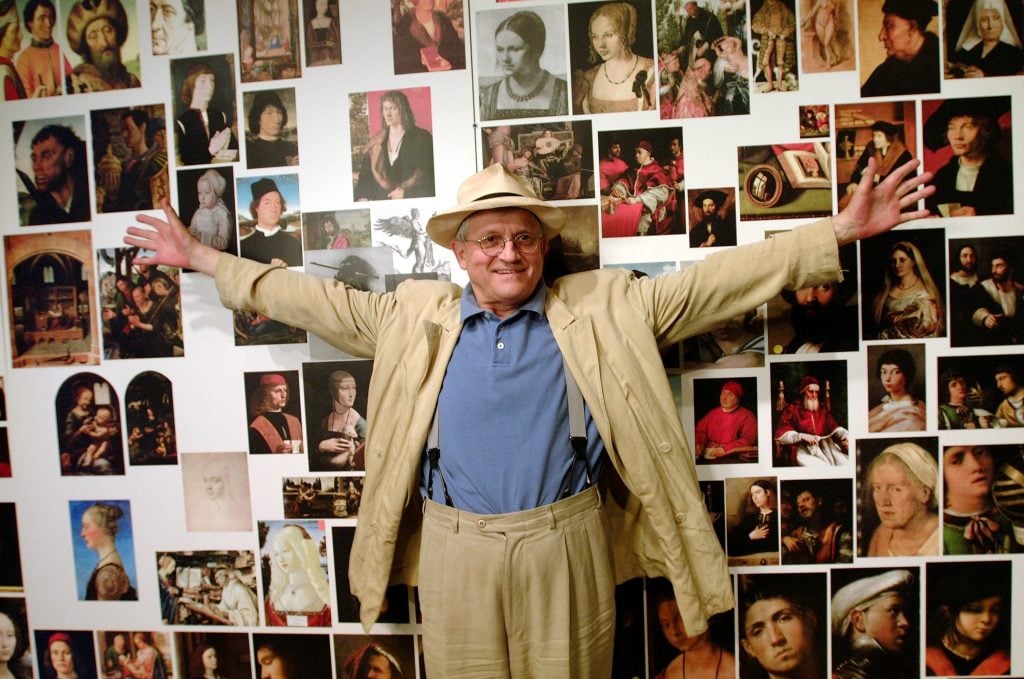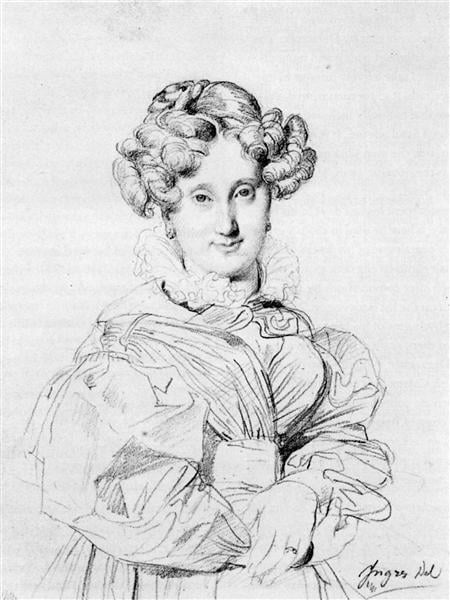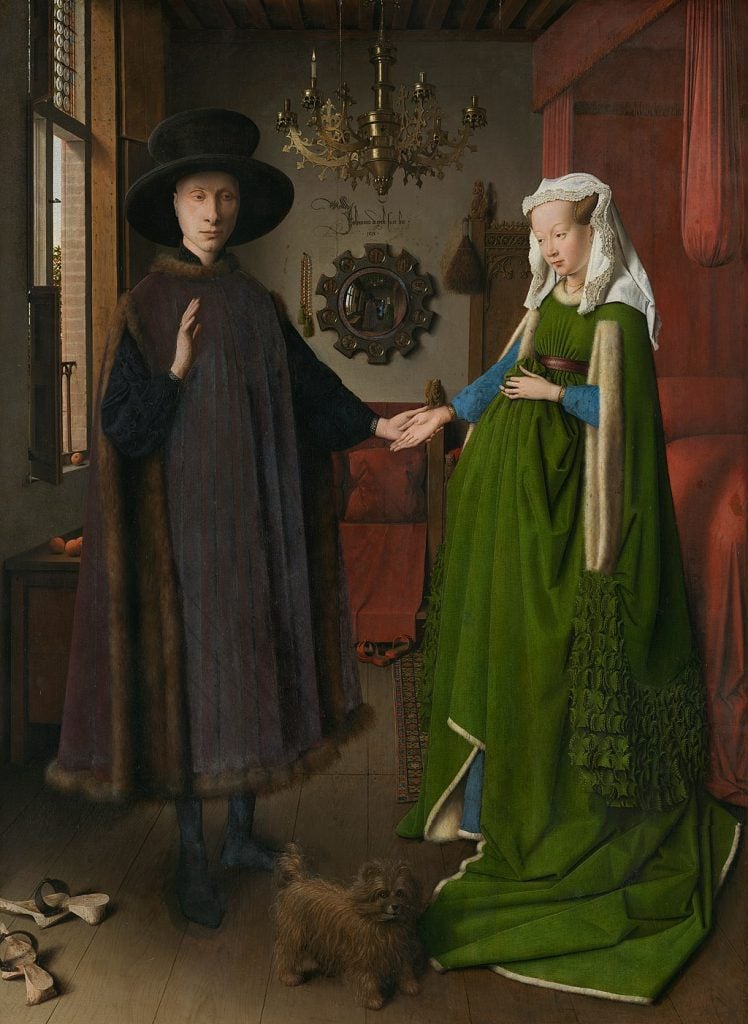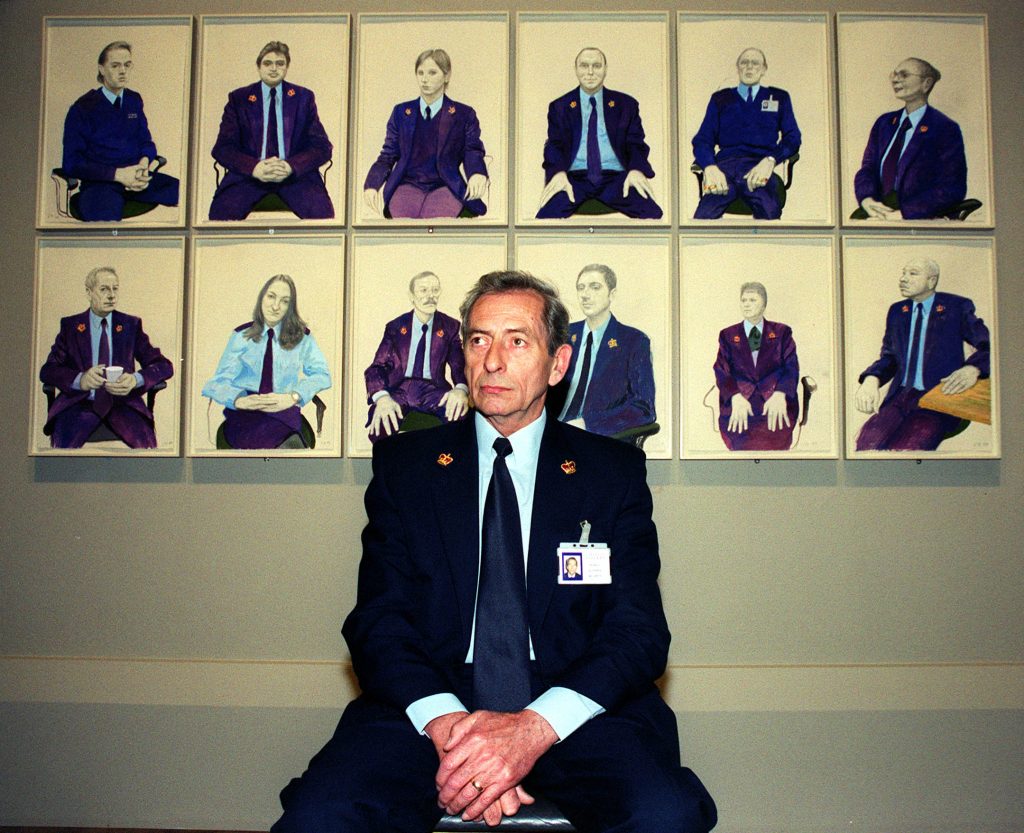Art World
Art Bites: The Polarizing Art Theory Named After David Hockney
The drawings of Jean-Auguste-Dominique Ingres inspired a hunch that would go on to incense the art world.

In 1999, David Hockney was surveying the drawings of French Neoclassicist Jean-Auguste-Dominique Ingres at London’s National Gallery when an uncanny feeling crept over him.
The graphite works were too perfect, their lines too swift and executed without preparatory markings. The body proportions, however, were noticeably askew. How could this be? To Hockney, such mastery recalled the projector aided sketches of Andy Warhol. Soon, he was chewing over a bombshell theory: what if the old masters, too, had used optical instruments to trace out their pictures?

Jean-Auguste-Dominique Ingres, Madame Louis François Godinot (1806). Photo: public domain.
An academic struck by such blasphemy might have scoured the historical record, but an artist, such as Hockney, goes straight to the paintings themselves. In his Los Angeles studio, he created The Great Wall, a timeline of western portraiture spanning eight centuries from Byzantine mosaics through Van Gogh’s 1889 self-portrait. He pinpointed the 1430s and Jan van Eyck’s Arnolfini Portrait as the moment painters began using optical aids in pursuit of “a photographic quality”.
In fairness, the evidence is slap-bang in the middle of the painting. The convex mirror with which Van Eyck so ingeniously reveals the whole chamber, couldn’t such a device have been used to project an image onto a flat surface? Having spied technological assistance in the work of one master, all the others became candidates.
As for Ingres, he suspected the painter had leaned on a camera lucida, an optical device patented in 1806 which uses a prism to superimpose an image of a scene onto a surface, such as an artist’s page. Hockney bought one and got to work, mastering it through a series of sketches of his friends, including the artists Ray Charles White and Don Bachardy.

Jan van Eyck, The Arnolfini Portrait (1434). Photo: Wikimedia Commons.
In 2000, the National Gallery invited Hockney to reflect on its collection with new work. He offered up 12 Portraits after Ingres in a Uniform Style, paintings of the museum’s security guards created with the aid of a camera lucida. With the guards often stationed near the paintings, visitors could assess the likeness for themselves. As with Ingres’ work, facial features are faithfully and finely executed, but the proportions are slightly odd, the head too small, the hands reaching out of the canvas.
The real drama was only just beginning. Hockney teamed up with Charles Falco, a professor of optical sciences at the University of Arizona, and published “Secret Knowledge: Rediscovering the Lost Techniques of the Old Masters.” The basic argument is that naturalistic representations beginning in the Renaissance were achieved through optical devices, and that the use of these produce specific optic errors, ones ‘exposed’ in the book.

Ron Lillywhite, an employee of the National Gallery, sitting in front of artist David Hockney’s “Twelve Portraits from Ingres in a Uniform Style”. Photo: Tony Harris/ Getty Images.
The charges fly: Johannes Vermeer used a camera obscura, Hans Holbein favored optical projection, Franz Hals relied on optics to master shadow and detail, Caravaggio worked from a basement with a curtain and lens, etc.
It incensed the art world, questioning the divine master artist who, following an intensive boyhood apprenticeship, developed a flawless eye and exquisite co-ordination. The science of the Hockney-Falco thesis, as it became known, was countered furiously with more science. Jan van Eyck’s mirror was ten times too small, Caravaggio’s basement would have been too dim by a factor of 1000, the optics available to Hals or Jean-Honoré Fragonard were too crude to achieve all Hockney-Falco proposed.
The book’s cover line may have devilishly asked “did the Old Masters cheat?” but Hockney meant nothing pejorative by it. “The lens can’t draw a line, only the hand can do that,” he said in an interview, “optical aids don’t diminish anything, it merely suggests a different story.”
What’s the deal with Leonardo’s harpsichord-viola? Why were Impressionists obsessed with the color purple? Art Bites brings you a surprising fact, lesser-known anecdote, or curious event from art history.





